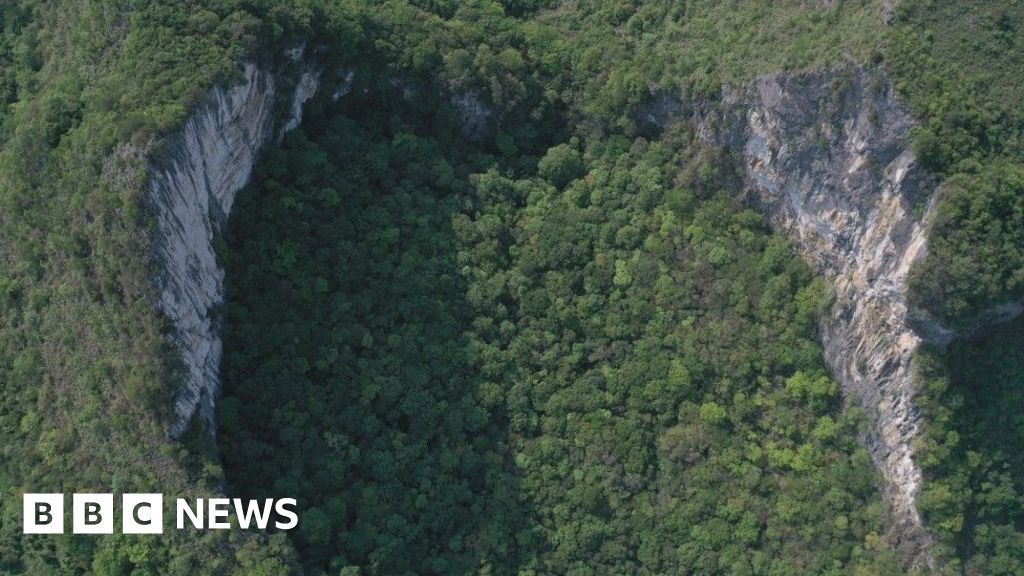The text only:
The couple stands on the edge of the sheer limestone cliff. More than 100 metres beneath them is a lost world of ancient forests, plants and animals. All they can see is leafy tree tops and hear is the echoes of cicadas and birds bouncing off the cliffs.
For thousands of years, this “heavenly pit” or “tiankeng”, in Mandarin, was unexplored. People feared demons and ghosts hiding in the mists which swirled up from the depths.
Fei Ge – the man who had just meticulously checked Rui and Michael’s harnesses before sending them over the cliff – knows better than most the feeling of stepping back over the edge.
He was one of the first explorers. Now in his 50s, he works as a tour guide helping people discover the secrets of Guangxi’s sinkholes.
Growing up in a village nearby, Fe had been told to stay away. “We thought that if humans went into the sinkholes, demons would bring strong winds and heavy rain. We thought ghosts brought the mist and fog.”
Videos of the Guangxi sinkholes have gone viral on social media. What is a fun and daring feat for young people is a source of much-needed revenue in a province that was only recently lifted out of poverty.
There are concerns that tourism revenue could override the demands of scientific research. About 50km from Ping’e, developers have built what they say is the highest viewing platform, which overlooks Dashiwei, the second-deepest sinkhole in the world.
By studying sinkholes, scientists also hope to find out how the Earth has changed over tens of thousands of years, and better understand the impact of climate change.
Source link




